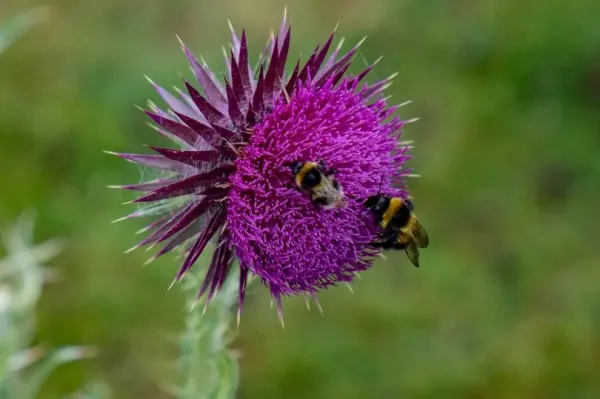
Weeds can camouflage themselves in our gardens well as many produce their own flowers, blending in with the rest of summer's colourful blooms.
But as temperatures continue to exceed 30C in Britain, pesky and fast-growing weeds can start spreading at a rate quicker than most can manage. This persistent weed, like the spiny-leaved, yellow-flowered milk thistle, is one of them.
While some plants need direct sunlight to grow and remain healthy, some others, like milk thistle, also thrive in shaded areas. This is because these areas are known to be much cooler rather than just getting blasted with the rays of sunshine.
Households with gardens that don't get lots of sun are therefore urged to keep an eye out for this one. Gardening expert Harry Bodell at PriceYourJob.co.uk, has shared his expertise on how to tackle these common weeds found in the UK, and how to remove them effectively.
READ MORE: Monty Don's urgent July warning as 6 plants could 'topple chaotically'

Milk thistles appear to be clever weeds, and prefer to avoid overheating to retain as much water as possible to be able to survive the hot temperatures. This is in comparison to other plants that might struggle.
The site said: “Milk thistle loves the dry, shaded areas of your garden and can hide behind other tall plants, so regular monitoring is key when it comes to combatting this weed. It can set hundreds of seeds per plant, so it’s important to tackle the problem early and make sure that you remove all the roots.”
Milk thistle has the ability to hide behind taller plants and establish deep root systems, making it much easier to overtake any shaded areas. They’re commonly found in shaded flower beds, as well as fences and overgrown areas in the garden where there’s shade.
READ MORE: Expert shares the house plants that will survive while you’re on holiday–and the hardest to keep
For that reason, it’s important to take immediate action and control the situation. This can be easily fixed by simply monitoring the garden on a regular basis, removing plants by hand and ensuring that the entire root has been taken out, so it doesn’t grow back.
If any part of the root stays, the plant is likely to regrow - and that’s going to be extra work for you.
Have you managed to successfully get rid of the yellow-flowered milk thistle from your garden? Let us know in the comments with your best tips and tricks.